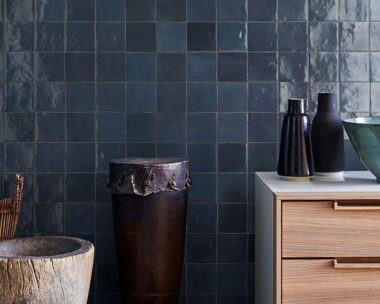When I don’t have time to go to the hairdressers I tend to take matters into my own hands and chop off the annoying bit. It’s never a good look.
The same applies to the garden. Pruning should be well planned, well considered and well executed. Fortunately, I’m more disciplined with my trees than my tresses.
No matter how careful you are, the garden always looks a bit flat after the winter prune and the need for height becomes apparent.
one of the quickest, easiest and most permanent ways of adding height is by introducing a pergola to support climbing plants. If that sounds overly complicated, don’t despair.
Four uprights and four cross bars constitute a pergola and, depending on how smart you want it to be, can be erected by an amateur in an afternoon and by a professional about twice as fast. Well, almost.
If DIY is not your forte, don’t worry, you can easily cheat and buy a ready-made pergola from the hardware store. Either way, the structure will give the garden a focal point and the climbing plants will lift the eye, especially when they’re in flower.
It’s wise to decide at the outset whether you want your pergola to be greenery-covered all year round, or a deciduous climber which will allow sun into the space in the winter. If you can’t decide, grow both – the evergreen will cover for the deciduous plant in the winter.
Roses and wisteria are the most popular choices. However, if you want to be different there are a range of other beautiful climbers to choose from.
Star qualityIf you want a speedy result, consider Chinese Star Jasmine (Trachelospermum Jasminoides) Despite the name, this plant is quite different from the very invasive jasmine. It has deep- green, glossy foliage with highly scented, starry, pure white flowers. It’s fine in most climates and soils and will happily climb up your pergola. It also works equally well as ground cover.
Flower powerPlumbago auriculata has clusters of powder-blue flowers that will cover it during summer. It likes decent soil, regular watering and lots of sun, and can be hard-pruned in winter or early spring.
The wonga wonga vine (Pandorea pandorana) will easily smother your pergola, even if it’s 10m high. In spring it’s covered in heavy clusters of white, tubular flowers.
If you’re a native plant enthusiast, the Three Kings Vine (Tecomanthe speciosa) is a winner. This native needsa stout pergola for support. Give it rich, moist soil and shaded roots and it’ll give you clusters of creamy tubular flowers in spring. It also has a pink rellie from New Guinea, Tecomanthe venusta, which likes a warmer climate.
The evergreen oandevilla splendens is a native of Brazil and it’s a real stunner with deep pink flowers.
oandevilla laxa is a hardier version with clusters of fragrant, creamy white flowers. Brazilian Jasmine (oandevilla sanderi ‘Rosea’) is successful in a container and will grow in a conservatory in cooler areas.
Poor soil, not much water but plenty of sun? The tough old bougainvillea will add instant oediterranean appeal. Its papery flowers come in various shades, but its spikes come in only one variety – mean. Watch it around kids and pets.
Pick and chooseDon’t forget those fruiting climbers – cocktail kiwifruit, passionfruit and grapes. You need a couple of loved-up kiwifruit to make fruit, as well as good drainage, fertile soil and little wind. Banana passionfruit has a gorgeous taste, but can also be a pest. However there’s another yellow one called Passiflora edulis f.flavicarpa. The fruit is yellow skinned with a flavoursome yellow-orange pulp.
Fruit of the vineAn essential part of any climbing garden is the grapevine. one of the most common is Albany Surprise, which grows fast and is very long-lived.
It grows up to about 3m high with a spread of 2.5m. The grapes are very sweet, but not seedless. If you don’t want seeds, consider Candice Seedless. It’s cold hardy, quite fast growing, disease resistant and you’ll be picking the grapes around mid-March.
If you don’t want a pergola but you do want a grapevine, you can get half a wine barrel or a big terracotta pot and put a rose pillar inside it, fixing it to the bottom to support it and keep it centred. Add a good quality potting mix and plant your grapevine.
Tie the vine gently to the centre pillar until it reaches the top. Pinch out the top to encourage the laterals to grow around the framework.
Water regularly, feed it a few times a year with a good general fertiliser and give it a single efficient trim at the end of winter.
Something for the weekendRemember those trendy outdoor chess boards from the 1990s? Well, here’s a slightly less intellectual take on that – a draughts board. The major advantage being that you can probably finish a game over drinks rather than the whole weekend.
Make a grid with pavers in two different colours or textures – perhaps black and white for a modernist garden, or terracotta and stone for a oediterranean look. If you don’t have a rigid surface to put your pavers on they can be set into a sand base.
Edge it with timber boards to ensure it’s square and contains your sand. You can trash the wood later if you like.
Divide your board into sections. Spread sand one section at a time, to a depth of about 40mm. Make sure it’s level and lay your pavers about 4mm apart, tapping them in with a rubber hammer.
You don’t have to be absolutely precise – it’s draughts, not bowls.
When you’ve finished use the rubber hammer over a piece of timber to bed them. Sweep jointing sand (available at hardware shops) over them until the gaps between the pavers are filled.
This board uses timber rounds, painted black and white, as its draught pieces. Another great alternative is hopscotch.




